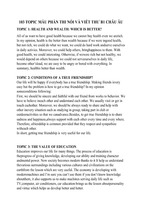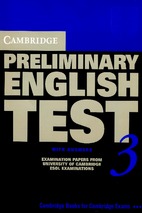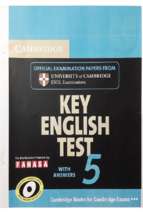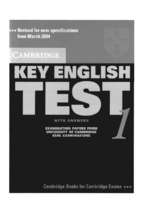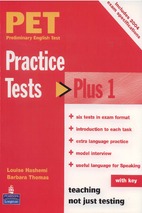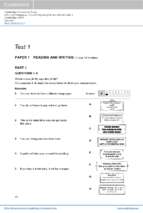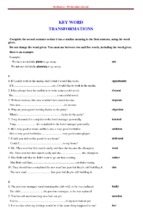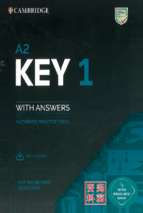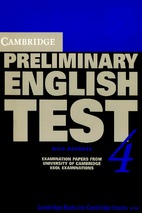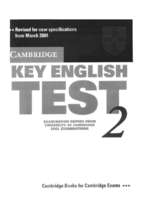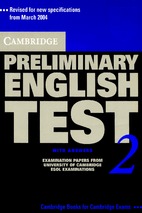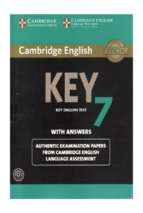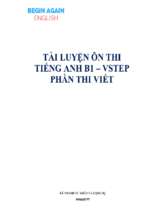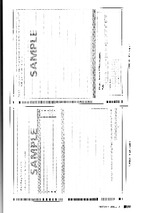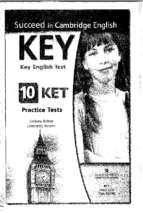Praise for
Your Writing Coach
“With compassion, wit and the wisdom gleaned from a long and
successful writing career, Jurgen Wolff guides you, step by step, on
the inner and outer journey to writing success. An invaluable tool
for the aspiring writer.”
Robert Cochran, co-creator and executive producer, 24
“Your Writing Coach pays as much attention to writers as to what
they write and should help seasoned pros as much as it will help
beginners. Jurgen Wolff is wise and constructive when it comes to
such issues as fear of failure, your inner critic, and rejection, as
well as brainstorming and finding the conditions in which to
work. Highly recommended.”
Julian Friedmann, writer’s agent, Blake Friedmann,
and editor, ScriptWriter magazine
“This book is the real deal—no fluff or padding, just concentrated
insider knowledge. By far the best book on writing I have read.”
Rupert Widdicombe, writer and journalist
“This book is an antidote to the bad advice aspiring writers are
often given. There are only two books on writing I recommend—
Stephen King's and this one.”
William F. Owen, author of Blackfoot Is Missing
“This book will help you find the insights of the writing craft. Pick
it up and let it guide you to success.”
Xavier Koller, Academy Award-winning director,
Journey of Hope
“Jurgen Wolff demystifies the writing process in a series of easy-
to-understand steps guaranteed to make you a better writer.”
Phil Doran, author of the bestselling The Reluctant Tuscan
Dedicated to you
and your success as a writer
First published by
Nicholas Brealey Publishing in 2007
3–5 Spafield Street
20 Park Plaza, Suite 1115A
Clerkenwell, London
Boston
EC1R 4QB, UK
MA 02116, USA
Tel: +44 (0)20 7239 0360
Tel: (888) BREALEY
Fax: +44 (0)20 7239 0370
Fax: (617) 523 3708
www.nicholasbrealey.com
www.timetowrite.com
© Jurgen Wolff 2007
The right of Jurgen Wolff to be identified as the author of this work
has been asserted in accordance with the Copyright, Designs and
Patents Act 1988.
ISBN-13: 978-1-85788-367-1
ISBN-10: 1-85788-367-5
British Lib rar y Cataloguing in Publicat ion Data
A catalogue record for this book is available from the
British Library.
Lib rar y of Cong ress C ataloging-in-Pub licat ion Data
Wolff, Jurgen, 1956Your writing coach : from concept to character, from pitch to
publication; everything you need to know about writing novels, nonfiction, new media, scripts, and short stories / Jurgen Wolff.
p. cm.
ISBN-13: 978-1-85788-367-1
ISBN-10: 1-85788-367-5
1. Authorship. 2. Authorship--Marketing. I. Title.
PN147.W56 2007
808′.02--dc22
2006038867
All rights reserved. No part of this publication may be reproduced, stored
in a retrieval system, or transmitted, in any form or by any means,
electronic, mechanical, photocopying, recording and/or otherwise without
the prior written permission of the publishers. This book may not be lent,
resold, hired out or otherwise disposed of by way of trade in any form,
binding or cover other than that in which it is published, without the
prior consent of the publishers.
Printed in the UK by Clays Ltd, St Ives plc.
JURGEN WOLFF
Your Writing
Coach
From Concept to Character,
From Pitch to Publication
Everything you need to know about writing
novels, non-fiction, new media,
scripts and short stories
Contents
Introduction
1
Part I: Ready, Steady…
3
1 No More Fear, No More Excuses
The fear of rejection
The fear that it won’t be good enough
The fear of success
The fear of revealing too much
The fear that you have only one book in you
The fear that you’re too old
The fear of being overwhelmed by research
And a word about courage…
2 Find Your Niche
Writing novels
Writing screenplays
Writing for the theater
Writing children’s books
Writing short stories and poetry
Writing non-fiction books
Writing articles
Decision time
3 Use Your Special Knowledge
What do you know?
Crime does pay
The doctors are in
It’s the law
The problem of ethics
Use your expertise, but don’t overuse it
Your expertise is a marketing asset
4
5
7
9
10
11
12
13
14
16
17
19
21
22
23
23
25
26
28
28
29
30
32
34
35
36
Part II: Write!
38
4 An Endless Flow of Ideas
39
39
40
44
46
47
48
48
The four brainstorming guidelines
Asking “What if…?” and other questions
Use the power of dreams
Invent the solution
Adapt and adopt
Construct an alter ego
Limber up with the story generator game
Contents
5 The Magic “Why?”
The first why: Why write this?
Using whys to create exciting and realistic characters
Applying the “Why?” technique to plot construction
Another useful question: What could happen next?
Reaching critical mass
Practicing the questions
6 Creating Powerful People
Meet a memorable character
Getting to know a character
Using visualization to find your characters
The discovery-through-writing technique
To base or not to base, that is the question
Revealing character through description
Revealing character through setting
Revealing character through action
Revealing character through other people’s eyes
The character arc
Nice people and not-nice people
Alvin Sargent on creating characters
7 Story Secrets
The premise and the plot
The role of needs
The relationship between need and want
Who or what is trying to stop your protagonist?
Who is your protagonist?
The first-person connection
The third-person omniscient option
Third person limited
Ignore the second person, please!
The role of the subplot
Starting to put it together: The fairy-tale story spine
The art of the start
The troublesome middle
The essentials of the ending
Another useful story structure
The story is the boss
8 Watch Your Language
Come to your senses
Life is in the details
Look for revealing actions
Elmore Leonard’s ten rules
The challenge of exposition
Talking about talking
v
52
52
54
56
57
58
58
61
61
64
67
69
70
71
73
74
75
76
78
79
82
82
83
85
86
87
88
89
90
93
93
95
96
97
100
101
102
105
105
110
111
113
114
115
vi
Your Writing Coach
About those “saids”
Two strategies for mastering dialogue
9 Take Two
Do it at the right time
Get into a different state of mind
Get feedback from others, carefully
Organize your notes
Start with the big stuff
If you get stuck, move on
Be ruthless
Know when to stop
Move forward to keep from moving backward
115
116
119
119
120
121
123
123
124
124
125
125
Part III: Persist!
127
10 Find the Write Space
128
129
131
133
134
Writing at home
The question of noise
What are you looking at?
Working away from home
11 With a Little Help from Your Friends
Consider the intention
Make time for a talk
Acknowledge their positive intention
Let them know how their behavior affects you
Be specific about what you’d like them to do differently
Look for win–win situations
Point out infractions immediately
Dealing with children
Find like-minded people
Find a writing buddy
Use the power of the internet
Attend a writing class
Attend writers’ conferences
Consider hiring a writing coach or consultant
You can have support even when you’re alone
12 Tame the Wild Inner (and Outer) Critic
There are a million reasons…
Everybody’s a critic
When the rejections are getting you down
The pain of not hearing
The 25 beans method
Don’t ignore constructive criticism
The curse of the inner critic
137
138
139
139
139
140
140
141
142
142
143
144
144
144
145
145
148
149
150
151
153
154
154
155
Contents
Identify your inner critic
Decide what you want
Bring it into view
Find the good intention
Find an alternative
Experiment
Reform and practice
13 The Write Time
Discovering your own patterns
Understanding what your current pattern gives you
Finding better ways to get a similar payoff
Use what already works
Watch what you say!
The power of saying “no”
Time pods
Keep an accurate record of your phone calls
Going MAD
14 Keep On Keeping On
Ask yourself the questions of creation
A unique planning exercise
Use metaphors to get past obstacles
Talk nicely to yourself
Use potential regrets
Change your physical and mental state
What to do if you get stuck
vii
156
156
157
157
157
158
158
160
162
164
165
167
167
168
170
171
172
175
175
177
178
179
180
181
182
Part IV: Sell!
185
15 Marketing Yourself
186
188
188
189
189
190
191
191
196
199
199
200
Do you need an agent?
What does an agent actually do?
How much do agents charge?
How do you find an agent and do you have to sign a contract?
Is it okay to send out multiple submissions to agents?
What if you don’t have an agent?
The power of the pitch
The query letter
Query letters for articles
Query letter dos and don’ts
What goes into a book proposal?
16 Guerrilla Warfare for the Writer
Find your strategic focus
What’s your USP?
The likability factor
204
204
205
206
viii
Your Writing Coach
Your new mantra: Do something different
Don’t take “no” for an answer
Create an alter ego
Find your audience
Play a stunt
Train them to buy
Use humor to capture attention
Use the power of numbers
Give them a taste
Consider what’s in a name
Sometimes size matters
Giving credit where it’s due
Sometimes free is good
Getting on radio and television
17 New Media, New Opportunities
New media markets: Film and television
New media’s impact on publishing
The self-publishing option
The e-book alternative
From real to virtual and back again: Opportunities in games
The opportunities are out there: Four inspirational stories
Content is still king
If you want to be a player, play
Do you have a website?
Are you blogging?
The power of podcasts
Feeding the hungry animals
Your new media strategy
18 The Writing Life
Keep setting and reaching goals
Stay flexible
Expect obstacles
Be your own role model
Sometimes winners do quit
Turn troubles into assets
Stay true to yourself
Be bold
Remember what’s really important
This isn’t goodbye
207
207
208
208
209
210
210
211
211
212
213
213
213
214
218
219
222
223
224
226
228
229
230
231
232
234
236
237
241
241
242
242
243
244
245
245
246
246
247
Introduction
“When love and skill work together, expect a masterpiece.”
—John Ruskin
Do you want to start writing or to write more, and more skillfully? You’ve come to the right place, because I’d like to be your
writing coach and guide you through the entire process, including a lot of aspects that other writing books never tell you about.
If something’s been stopping you from writing, it’s probably
down to one of the fears I reveal in Chapter 1, where you can also
discover how to overcome every one of them. Then I’ll help you
decide what you are best suited to write, whether it’s short stories, articles, novels, non-fiction books, or scripts. You’ll also find
out how to take advantage of your knowledge and life experience
in your writing.
Then we turn to the actual process of writing, starting with
unique right-brain creativity techniques that you can use to generate an endless flow of ideas. Then you’ll learn how the “magic
why” can produce a blueprint of your story, and how to create
wonderful, vivid characters. I’ll share with you the Q/A technique,
a tool you can use to hook your readers and keep them engaged all
the way through your book, story, or script. You’ll learn story
secrets that help you structure your material, and techniques to
make your language vivid and compelling. And you’ll see how you
can evaluate your first draft and rewrite effectively and efficiently.
The third part of the book covers a number of crucial topics
that are often ignored. These include how to get your friends and
family to understand and support your creative activities, how to
create a great writing space for yourself, how to use your writing
time most effectively, and how to motivate yourself when your
energy starts to flag. Every writer faces rejection from time to
time, so I’ll show you how to deal with critics, including the one
2
Your Writing Coach
who is usually the harshest of all—your inner critic. With the
neuro-linguistic programming technique in Chapter 12, you’ll
be able to transform the inner critic into a constructive inner
guide—the key to avoiding or overcoming writer’s block.
In the final section of the book you’ll learn the secrets of marketing yourself and your work, beyond the normal methods that
most other writers are using. There’s also a chapter on new
media, which offer tremendous opportunities for writers smart
enough to find out about them. And we finish with a chapter on
how to create and enjoy the writing life.
One of the best features of this book isn’t in the book itself.
Every chapter has a bonus that you’ll be able to access on the
website www.yourwritingcoach.com by typing in the code word
at the end of that chapter. These bonuses include a video interview with Robert Cochran, the co-creator of the international hit
series 24, telling you about writing thrilling scripts; another with
agent Julian Friedmann candidly discussing what agents look for
in clients; and another with a mystery writer from Murder
Squad, a group of UK crime writers who have figured out how to
get free publicity for themselves and their books. There are additional audio interviews, demonstrations of writing and rewriting
techniques, and much more—all at no extra charge to buyers of
this book.
Once you’ve read the book, if you still have questions you are
welcome to email me at
[email protected] and I’ll do my
best to answer them, because I’m serious about being your writing coach. I know from my own 25 years’ experience of writing
articles, books (Do Something Different, among others), scripts
for television (including Benson, Family Ties, and Relic Hunter),
and films (The Real Howard Spitz, starring Kelsey Grammer and
Amanda Donohoe) that writing can be the most satisfying
creative activity in the world—and it pays pretty well, too! I’d like
to share with you all the lessons I’ve learned (some of them the
hard way) and help you on the road to your writing success. Are
you ready to start?
PART I
READY, STEADY…
“All glory comes from daring to begin.”
—Eugene F. Ware
If something has been holding you back from writing, it’s probably a fear of some kind. In this part, we take the bull by the
horns by confronting and banishing the fears that typically keep
talented people from expressing themselves as writers. Then we
find out what specific type of writing suits you best. Finally, we
explore how who you are and what you know can guide you in
selecting what stories to tell.
1
No More Fear,
No More Excuses
“To do anything in this world worth doing, we must not
stand back shivering and thinking of the cold and danger,
but jump in, and scramble through as best we can.”
—Sidney Smith
A good coach should prepare you for the obstacles that may lie
ahead, and I know the number one obstacle you will face on your
road to success. It’s you.
Years ago there was a wonderful comic strip called “Pogo,”
and one famous line from it was, “We have met the enemy, and
he is us.” It’s true. Yes, it can be hard to think of the right word,
find the right agent, and put up with dumb decisions from editors or studio executives, but the main problems we face are generated by ourselves. Most of the time, these stem from our fears.
You may feel certain this does not apply to you, but in many
cases the fear is hidden not only from others, but also from ourselves as would-be writers. Therefore, I respectfully suggest that
you don’t skip this chapter. If any of the fears mentioned here
ring true, they may be at the root of your inability so far to write
as much or as well as you’d like. Fortunately, as you’ll see, there is
a way to overcome each of these fears. The best strategy is to face
them right now, head on, before we get on the nuts and bolts of
writing and selling your work. Here they are, the Big Seven Fears
and the ways to conquer them.
No More Fear, No More Excuses
5
The fear of rejection
This is by far the most common fear of writers and artists of all
kinds—in fact, of all human beings. Generally, when you stop
yourself from doing anything, at the heart of that self-sabotage is
the fear that you (or what you create) will be rejected.
When you were young, maybe your mother or father encouraged you to take a chance on doing something by saying, “The
worst that can happen is that they say no.” What they didn’t realize was that this is the worst that can happen. If you have a memory of asking someone out when you were a teenager, and that
person said no, you’ll probably still be able to call up that feeling
of teeth-grinding, I-wish-I-could-just-sink-into-the-earth humiliation. Unfortunately, children quickly become expert at ridiculing others who are different—too fat, too thin, too tall, too short,
too geeky, too anything. You learn to fit in, to do what everybody
else is doing, desperate not to stand out. Of course, the irony is
that every breakthrough, in writing or in any other field, comes
from doing something different from what the average person is
doing.
Here’s the hard truth about rejection: You can’t avoid it. There
isn’t a single successful writer who hasn’t had work rejected at one
point or another. Most of them had many, many rejections before
they had their first success. Here are a few examples:
✐ It took J.K. Rowling a year to find a publisher for the first
Harry Potter book. There was only one offer, from
Bloomsbury, for £2,500 (about $4,900). At the end of their
meeting her publisher’s parting words were, “You’ll never
make any money out of children’s books, Jo.”
✐ Melody Beattie’s non-fiction book Co-Dependent No More
was turned down by 20 publishers. It went on to sell five
million copies.
✐ Joanne Harris wrote three books that failed to find a publisher. Her fourth book, the novel Chocolat, became an
6
Ready, Steady…
international bestseller and spawned an equally successful
film.
✐ John Grisham’s first novel, A Time to Kill, was rejected by 15
agents and 26 publishers before Wynwood Press agreed to
publish it—in an edition of 5,000 copies. The book didn’t
become a bestseller until Grisham’s next three were hugely
successful.
✐ Wilbur Smith’s first novel found no publisher, and he
decided that writing wasn’t for him. Eighteen months later,
his agent convinced him to have another try. That book
sold, and since then his novels have sold 84 million copies.
I could fill this entire book with similar stories. Rejection comes
with the territory. If you expect rejection and remember not to
take it personally, it loses some of its sting. Remind yourself that
the people who are judging you are fallible (let’s spend a happy
moment imagining how the publishers who turned down J.K.
Rowling must be feeling just about now…).
That’s not to say it won’t hurt when the big fat envelope containing your manuscript comes back again, or when agents say
they don’t even want to read your material. It will, but you’ll get
over it. Here’s what Norman Mailer has to say about this, in his
book The Spooky Art:
“More sensitive than others in the beginning, we have to
develop the will, the stamina, the determination, and the
insensitivity to take critical abuse. A good writer, therefore,
does well to see himself as a strong weak person, full of brave
timidity, sensitive and insensitive. In effect, we have to learn
to live in the world with its bumps and falls and occasionally
startling rewards while protecting the core of what once
seemed a frighteningly perishable sensitivity.”
In other words, you can’t just try to transform yourself into someone with such a hard shell that you no longer feel any pain. If you
do, you lose the very part of yourself that allows you to create
No More Fear, No More Excuses
7
insightful, emotional, touching stories and books and scripts. The
two parts of yourself have to co-exist. Fortunately, there are some
excellent techniques for doing this. One is always to be working on
the next thing. When you finish one writing project and start to
send it out, get right to work on the next one. Your creative juices
will be flowing and when the first one is rejected, it’s much easier
to think, “Well, that one may or may not be published eventually,
but the one I’m working on now is sure to be a masterpiece.”
Emotionally, there is nothing worse than feeling your entire career
is riding on one project and waiting day after day to hear whether
the people to whom you’ve submitted it actually want it.
The fear that it won’t be good enough
This fear sometimes stops people before they even start. Such
people measure their ideas against the best writing of all time.
Can what you intend to write possibly attain the stature of the
works of Shakespeare, Conrad, or Hemingway? Probably not
(although you never know). So what’s the point of writing it in
the first place? If you use this line of reasoning, it’s almost certain
you’ll never get started.
If your pattern is to compare yourself to the greatest authors
of all time, there are two ways to get over it. One is to remember
that you never know what will stand the test of time. Shakespeare
was writing popular entertainment, and probably would be
astonished to find his plays still being read and performed 400
years later. If you’re worried about how posterity will judge your
work, accept that you can’t possibly know this anyway.
On a more down-to-earth level, it’s helpful to remind yourself that your writing doesn’t have to be great literature to have
value to your readers. It’s unlikely that the books of John
Grisham or Danielle Steele will ever feature in many literature
courses, yet they have given pleasure to millions. Even the Harry
Potter books are looked down on by a number of literary critics,
yet all around the world they have rekindled children’s interest in
8
Ready, Steady…
reading. If you’re writing non-fiction, surely you can think of
dozens of examples of books, like How to Win Friends and
Influence People, that are short on literary merit, but that have
helped or inspired millions of people. Richard Carlson, whose
series of Don’t Sweat the Small Stuff books has sold millions, told
interviewer Judith Spelman:
“I don’t pretend to be really intellectual. I don’t offer psychobabble. I just write about the very practical and ordinary
things and that’s why people relate to it.”
If your pattern is stopping partway through your project, perhaps you are measuring what you’ve written against the pristine,
perfect vision of it that you had at the start. For example, maybe
you wanted to write a book that would illuminate the thoughts
and feelings of a woman who is abandoned by her husband and
left to raise their handicapped child alone. Halfway through, you
read what you’ve written so far and realize that the characters
aren’t as alive as you’d hoped they would be, or the plot has some
holes in it, or your prose isn’t as vibrant as you imagined. At this
point, it’s easy to give up—why carry on when clearly you’re not
fulfilling your own vision? Sometimes at this stage a new idea
occurs to you, a new story that is, as yet, perfect. So you put aside
the half-finished draft and start writing the new story… until,
halfway through that one, the same thing happens. After a few
instances of this, it’s easy to come to the conclusion that you’re
wasting your time with this writing business and give up.
If you stop yourself by comparing your partly finished book
to the ideal you had in mind when you started, consider this:
Would you feel disappointed by a 10-year-old boy because he’s
not going out every day earning a living? Presumably you’d say
of course not, he’s just a child, he’s not an adult yet, why would I
expect him to have a career and earn his own way? Your partly
finished book is also a child. It becomes a grown-up when it’s
completed and has been rewritten and polished. That’s the time
to assess it, not now.
No More Fear, No More Excuses
9
It’s also important to remember that it’s extremely rare for
any artist or writer or architect or other creative person to feel
that their final product matches up to their original dream. I’m
sure Michelangelo looked up at the ceiling of the Sistine Chapel
and thought it could have been just that little bit better. If you
accept this as an inevitable part of the creative process, you stop
punishing yourself for your supposed failings. The positive
aspect of this phenomenon is that it can spur you to move on to
your next project, hoping and planning to get closer to realizing
your dream next time. You may never arrive, but that desire
keeps you travelling hopefully, and the by-product of that journey can be books that entertain or inspire or instruct a dozen
people or a million.
For some writers thinking through the logic of this process is
enough; others find that they have a strong inner critic who
resists mere logic. If you’re one of those people, you’ll find the
solution in Chapter 12, “Tame the Wild Inner (and Outer)
Critic.”
The fear of success
Everybody understands why someone might be afraid to fail; it’s
a bit more difficult to understand why some people are afraid of
success. The reason is that we tend to fear change, and success is
one type of change. Maybe we’re afraid that our old friends won’t
like us any more, or that we won’t be able to cope with the
demands of fame and fortune. Or maybe we worry that in the
public spotlight our failings will be exposed.
The fact is that the only constant is change. Whether or not
you succeed as a writer, you will lose some friends and gain others, you will have money pressures (having too little or too much
for comfort), and at times you will feel vulnerable.
As far as fortune is concerned, if you earn a lot you always
have the option of giving it away. If you don’t like being rich, you
can choose to go back to being poorer. However, the odds are you
10
Ready, Steady…
won’t mind it. As someone has pointed out, “Money can’t buy
happiness, but it can make unhappiness much more
comfortable.”
With fame, writers have a big advantage over actors. A very
successful actor is recognized by millions of people. The writer
who is read by millions still can choose to keep a low public profile. Most readers don’t even know what their favorite authors
look like, other than the picture on the back cover. Being a bestselling author may open the door to fame, but you don’t have to
go through it.
The fear of revealing too much
Writers sometimes panic when they realize that the book or
script they are writing is a lot more personal than they intended.
It may not be strictly autobiographical in terms of dates, times,
and names, but their innermost fears, shames, and longings are
making their way into the work.
In one way, of course, this is great news. When such deep feelings are reflected in a work it’s much more likely to strike a
responsive chord in readers. The books you love probably are the
ones that made you think the author understood you, that he or
she is a kindred spirit. If you don’t open yourself up in this way,
it’s unlikely your words will have much emotional weight. Many
writers have said that writing is a kind of therapy. Putting their
fears and passions into a book and perhaps coming up with a
story that reflects how things should have worked out, rather
than how they actually did, can be a healing process. Science fiction and fantasy pioneer Ray Bradbury delivered an invocation
at a Humanitas Prize gathering, saying:
“Help us to know that only in our loves can we create and
out of that creation change some stray, small part of the
world we touch.”
No More Fear, No More Excuses
11
Readers don’t have some kind of X-ray vision that tells them
which part of what you’ve written is true and which part you’ve
made up. Furthermore, mostly they won’t care. It’s not the
author’s experience they’re thinking about and sharing, it’s the
character’s.
A separate but related issue is whether family and friends will
recognize you or themselves in your work. People know themselves so little that some will see themselves in characters you
based on someone totally different, and others will fail to recognize themselves in characters you did base on them. Naturally,
you have to avoid a portrayal that is libellous, but beyond that
you can’t really worry about it. Allow the story to guide you, give
your work the feelings it requires, and let the characters come
alive. And when it’s all done, if someone asks where you got the
idea for a particular character, you always have the option of
lying. I’m not saying I ever do this, but when my play Killing
Mother was produced, I did tell my mother that it was based on
the story a friend told me about his mother…
The fear that you have only one book in you
Most people have heard of publishing’s sophomore curse: Often
a second novel is less successful than the first. Frequently, this
happens because a first novel is heavily autobiographical and the
writer has spent years on it. If it is successful, the publisher may
press for a follow-up novel to be produced quickly, sometimes
with a sacrifice in quality. Therefore it’s natural for first-time
novelists to worry about whether their second effort will live up
to their initial work, but in some cases writers start worrying
about this before they’ve even finished the first one.
There are two answers to this anxiety. Some authors only ever
produce one work. The prime example is Harper Lee, with her
masterpiece To Kill a Mockingbird. Not only has this book given
pleasure to millions, it has also had an important social impact.
When the civil rights lawyers who risked their lives in the 1960s

